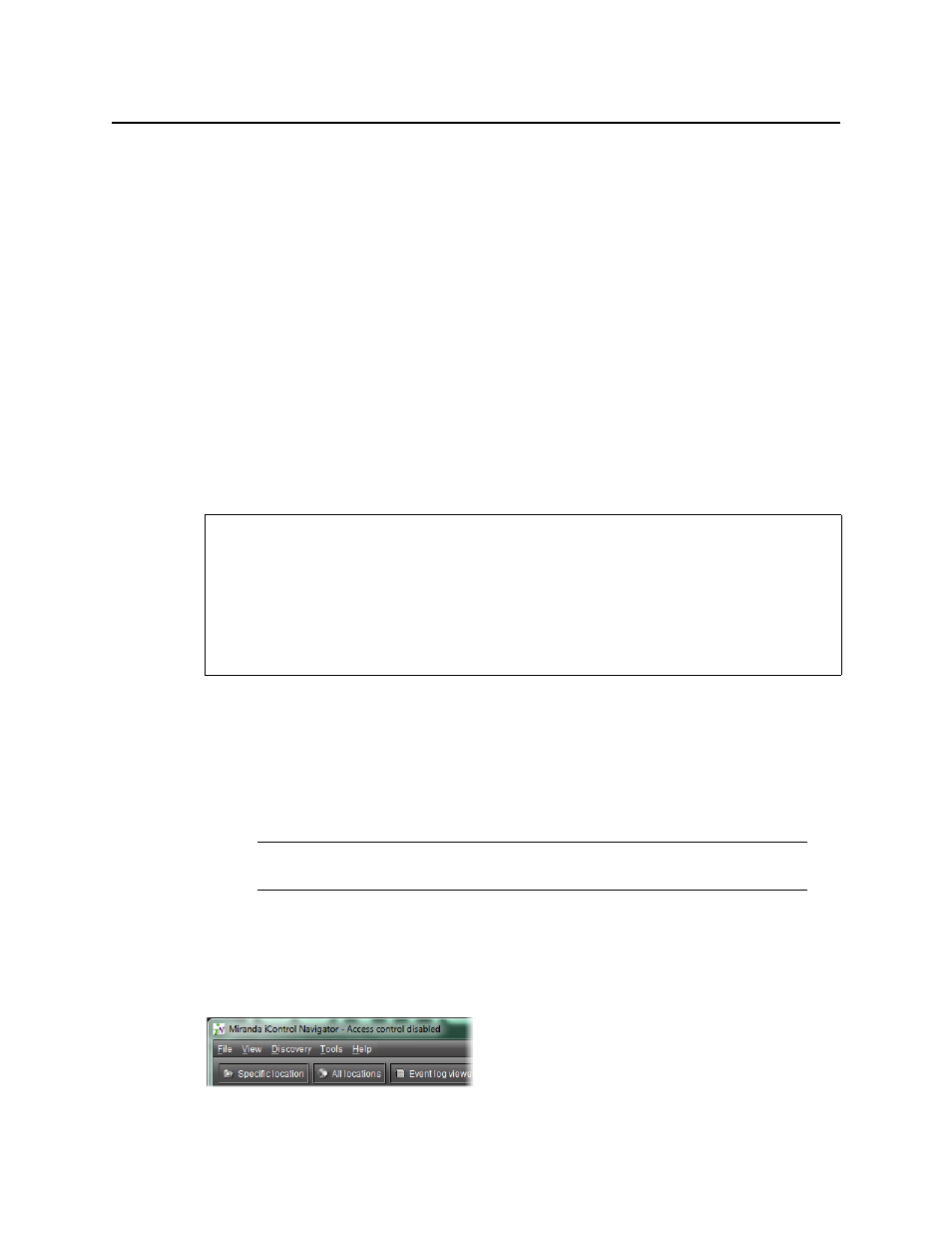Rules for remote domains, Removing domains, Enabling access control – Grass Valley iControl V.4.43 User Manual
Page 324: Removing domains enabling access control

Access Control
Rules for Remote Domains
314
For example, the IP address
10.3.4.30
could have
miranda.com
as a base domain and the
following other valid domains:
Canada.miranda.com
,
Toronto.miranda.com
, and
Canada.Toronto.miranda.com
.
• All additional locally managed domains must relate to a base domain and existing
subdomains.
For example, for IP address
10.3.4.30
, the additional locally managed domain
Toronto.Canada.miranda.com requires that Canada.miranda.com and Toronto.miranda.com
exist. with miranda.com as the base domain.
Rules for Remote Domains
• Remotely managed domains must be the child of a locally managed domain.
For example, for IP address
10.3.4.30
,
Toronto.Canada.miranda.com
is the child of
Canada.miranda.com
which is also managed by IP address
10.3.4.30
.
Removing Domains
To remove a domain
1. On the Access Control Configuration Form, select a domain in the list under Domains
Managed Here or Remote Domain Referrals.
2. Click Delete (the Delete button corresponding to the list from which you are removing a
domain).
The domain is removed from the list.
Enabling Access Control
Users can open any application (e.g. iC Navigator) from an Application Server on which access
control has not been enabled. In such cases, the message
Access control disabled
appears
in the title bar of the application window.
Figure 6-17
REQUIREMENTS
Make sure you meet the following conditions before beginning this procedure:
• You have opened the Access Control Configuration Form in iControl (see
• You have read
, on page 313 available as a
reference.
Note: Removing a domain deletes all users and privilege settings associated with
that domain (all of its LDAP entries are cleared).
